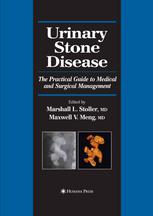

Most ebook files are in PDF format, so you can easily read them using various software such as Foxit Reader or directly on the Google Chrome browser.
Some ebook files are released by publishers in other formats such as .awz, .mobi, .epub, .fb2, etc. You may need to install specific software to read these formats on mobile/PC, such as Calibre.
Please read the tutorial at this link: https://ebookbell.com/faq
We offer FREE conversion to the popular formats you request; however, this may take some time. Therefore, right after payment, please email us, and we will try to provide the service as quickly as possible.
For some exceptional file formats or broken links (if any), please refrain from opening any disputes. Instead, email us first, and we will try to assist within a maximum of 6 hours.
EbookBell Team

4.4
82 reviewsUrinary stone disease has afflicted mankind for centuries and continues to be a significant medical ailment throughout the world. Contemporary management reflects the changes and evolution that have occurred in both medicine and, specifically, urology. Traditional open surgery has been nearly replaced by minimally invasive techniques, the result of technologic innovations, miniaturization of instruments, and interdisciplinary collaboration. Nevertheless, nephrolithiasis remains a chronic disease and our fundamental understanding of the pathogenesis, and molecular and genetic basis of stones as well as their prevention, remains rudimentary. All large calculi were once small calculi. Where do stones originate and what facilitates their retention, allowing them to grow? Although we rely on 24-hour urinary collections, clearly our current methods of directing medical therapy have limitations. In addition, interest in disease prevention continues to grow and understanding basic questions and the underlying pathophysiology of stone disease will help optimize management strategies. Future advances in urinary stone disease will be the result of collaboration among urologists, nephrologists, radiologists, dieticians, scientists, and partners in industry. Physicians must not be complacent with the current status quo or be overly eager to intervene because techniques are less invasive; rather, the goals should be a better understanding of the underlying disease process in order to identify those at risk, prophylax against stone development and recurrence, and improved nonsurgical therapies.